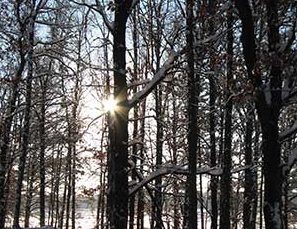
Polar Vortex Effects? Spring Will Soon Tell
Area landowners have shepherded their properties through two distinct winters this year, the first almost too mild to deserve the title, abruptly pivoting on January 18 to some of the coldest, snowiest weather seen around here in decades.
“In a nutshell, I would describe it as weather whiplash,” Steve Vavrus, a senior scientist for the Center for Climatic Research at the University of Wisconsin-Madison Nelson Institute for Environmental Studies, told WisContext, an online service of Wisconsin Public Television and Wisconsin Public Radio. What does this kind of brutal turnabout tell us about the issues we’ll be dealing with this spring? Was the Polar Vortex strong enough to give a boot to some invasive species we struggle with? What will it mean for our wildlife?
Insect Pests
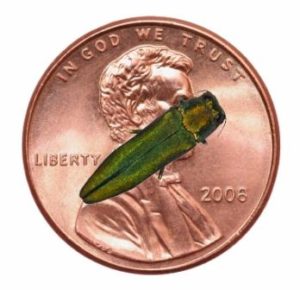
A persistent speculation since the mercury dropped has been making the rounds that the arctic blast may have dealt a knock-out blow to the Emerald Ash Borer (EAB) population decimating our ash trees. Unfortunately, experts say the cold will be more of a speed bump than a stop sign. “Yes, it got really cold,” says P.J. Liesch, Extension Entomologist at the UW-Madison Insect Diagnostic Lab. “Undoubtedly there will be some mortality of the EAB, but the larvae are wintering under insulating bark, which is warmer than the air temperature, especially on the south side of trees, where sunlight has counteracted the worst of the cold. We had a very similar situation with arctic blasts five years ago, and it did seem to slow the EAB down, but they are still around.”
Liesch notes that gypsy moths may take a hit because they lay their eggs in exposed locations where cold can kill them. “It’s a numbers game,” he says. “They will bounce back relatively quickly.” It is also possible the Japanese Beetles could be knocked back this summer. Five years ago following a similar situation, they were pretty quiet around the state, but we won’t know until summer comes. Ticks overwinter on the ground down among leaf litter where snow and leaves act as insulation. Liesch is not expecting the Polar Vortex to have much of an impact on their population. “I’ve had questions about mosquitos,” says Liesch. “Many of our most vicious, biting mosquitos make it through the winter as eggs, and they have been covered by snow. What’s going to drive 2019’s mosquito story is how much rain we get in the spring and summer months.”
Invasive and Other Plants
Did the bitter cold have any effect on invasive plants? The news from Mark Renz, UW Extension weed specialist, was not encouraging, because there was a thick layer of insulating snow on the ground. Also, Canada thistle, wild parsnip, and garlic mustard tolerate really cold temperatures. Renz noted that in early January we had some pretty cold periods with no snow, which could have an effect. “We actually got this freeze-thaw cycle with ice sheets but no snow. That process can kill some of those perennial roots. When the ice expands, it can damage roots,” he says, “but it won’t harm the seeds.”
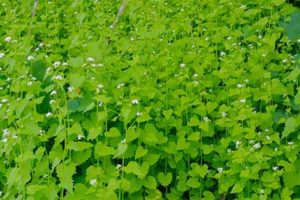
Unfortunately, these same conditions can be hard on our beloved spring ephemerals. When things green up, Renz says, we’ll find out what damage was done. The extreme cold may cause more winter kill of fruit trees and bushes, alfalfa, and other perennial crops in Wisconsin. Amaya Atucha, fruit crop specialist at the University of Wisconsin-Madison, told WisContext that grapes, apples, and other fruits grown in the state aren’t used to the frigid temperatures brought by the recent polar vortex.
Wildlife
While we were piling more logs into the wood-burning stove, how were the animals outside faring through the arctic blast? It depends on the species, according to David Drake, UW-Extension wildlife specialist.
“The animals in Wisconsin have choices to make as winter approaches,” says Drake. All the amphibians and reptiles hibernate. Some animals migrate. Of the state’s 400 bird species, 85% head south. They may go no farther than Illinois or all the way to Central America. For some, such as juncos from northern Wisconsin and Canada, this area is their “warm-weather” destination. Among mammals, some, like bears and bats are true hibernators. Other animals such as chipmunks and ground squirrels are restive hibernators, sleeping or waking depending on conditions.
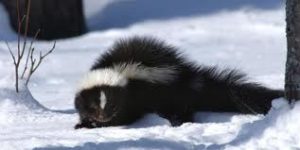
Other animals seek out micro-climates – areas that are protected from the wind but open to sun. Evergreen trees provide shelter for many.
Surviving a Polar Vortex depends on timing. Even in a stretch of cold weather like we had this winter, animals are going to be okay as long as they can get food. As the weather gets colder, they have to burn more energy to stay warm, Drake notes.
When the windchill reached -54 degrees Fahrenheit, some animals coped by being less active during the day, staying in sun, or finding some kind of shelter. Most animals can weather bitter cold like that for a few days or a week.
The sharpest challenge for wildlife is when the cold snap comes late in winter when they are starting to exhaust the natural food supplies they have been eating down since October. “That can get them into trouble,” says Drake. “They can’t find sufficient food quickly enough to replace the calories they are burning.”
Some animals do perish during extreme cold, Drake notes. That is a necessary and natural part of regulating the population.
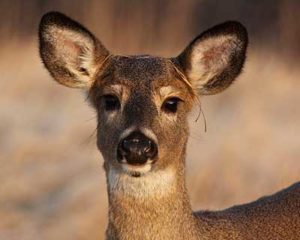
“People’s natural inclination is to feed animals when it is really cold,” says Drake. “But sometimes feeding them can cause more problems.”
For example, feeding deer in areas with chronic wasting disease is dangerous and illegal. Putting food out on the landscape brings deer together and spreads the disease.
In any event, corn is not a good thing for deer, says Drake, because as the corn breaks down in their digestive system, it expands the deer’s stomach and can hurt them. Also, some corn is infected with a fungus that harms turkeys.
It’s been a tough winter, combining extreme cold with extreme precipitation. Vavrus notes that winters like this have become more frequent in the last 40 years. Last year was the second wettest on record for this area, and the snowy first months of 2019 are the sixth wettest. Every season is a learning opportunity, and what we learn this year may prove valuable in the future.
Written by Denise Thornton, Driftless Landowner and Environmental Blogger for digginginthedriftless.com.
